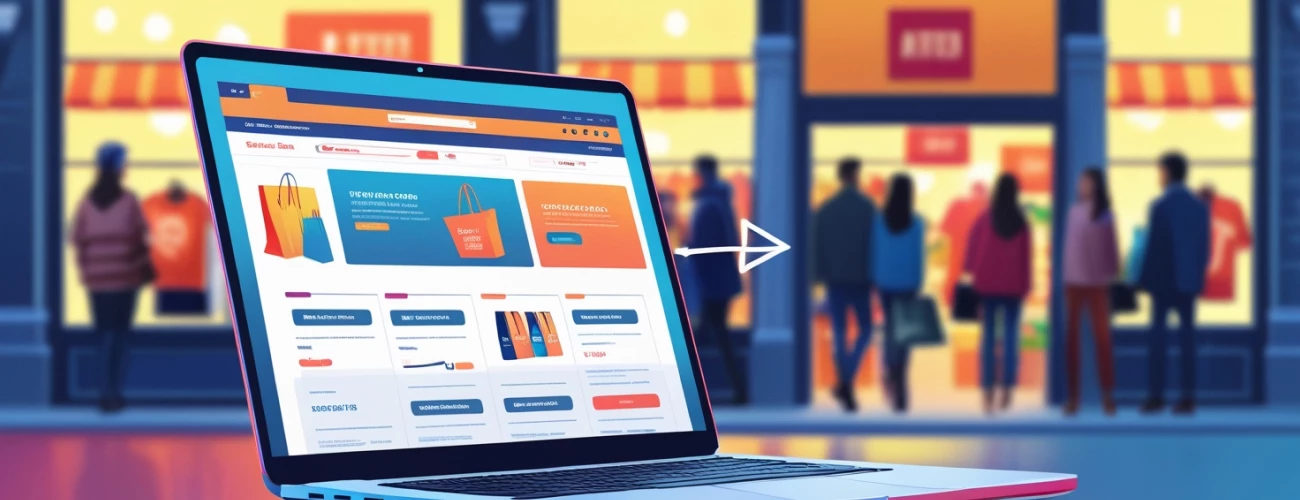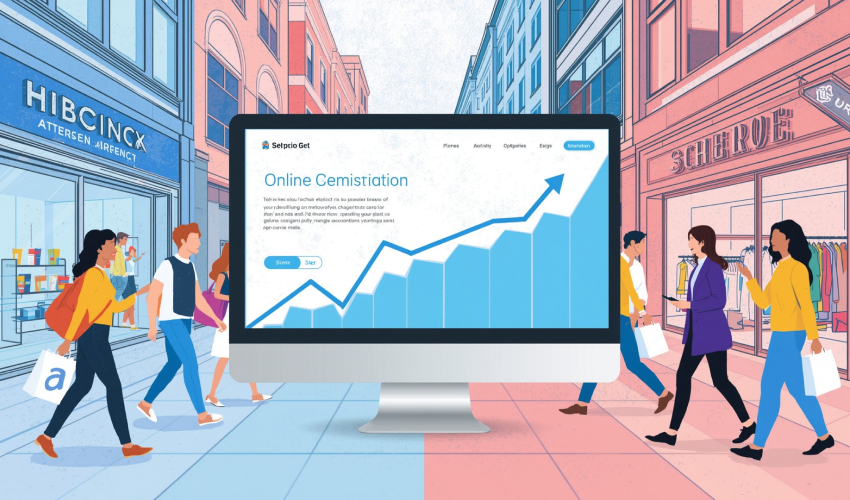How websites influence offline sales: case studies and metrics

A company's website is an important channel that not only influences online sales but also customer behavior at offline points of sale. Before visiting a store, shoppers are increasingly researching product information online. They look at the product range, prices, promotions, and services—and only then decide whether to visit your store and what to buy. Read on to learn more about how a website affects the success of traditional retail.
The connection between offline and online sales
The connection between offline and online sales demonstrates how a website affects in-store sales:
- 82% of active internet users first search for information about a product online and then purchase it in a store;
- 83% of consumers who have access to the internet at least occasionally research products online before going to a store, and 24% always do so.
These figures show that creating an online store plays an important role in offline sales. A potential customer may not click the “Buy” button, but the website's influence on the store remains, as it is the website that helps the person make a decision and choose where to go to make a purchase. Therefore, it is important to remember that online sales increase offline profits if the business builds its digital presence wisely.
How does the website influence decisions in the store
How does the website influence the consumer? Several mechanisms are involved here:
- reviews — before going shopping, customers study recommendations on the website and on social media. Therefore, it is worth making sure in advance that your resource has good reviews. This will have a positive impact on the brand's image and is a vivid example of why a website improves offline sales;
- design and convenience of the resource — the more convenient and understandable the resource (high-quality photos, well-thought-out filters, descriptions), the higher the chance that a person will visit the store with the intention of buying. Thus, the website as a decision-making tool allows the customer to make a choice in advance, evaluate the assortment, and shorten the path to the checkout;
- high-quality content — the role of online presence in purchasing is noticeable in areas where it is important to “touch” the product before buying: clothing, cosmetics, technology. Therefore, the better the information is presented, the higher the chances of successful offline sales.
- personalization — if a website remembers a user's interests or sends personalized offers, this can encourage them to visit a store. People don't just go to “look,” but with a specific purpose — to try on what they have already chosen online or to take advantage of a personalized offline promotion.
Thus, developing an online store in Ukraine is not only a successful move for effective online sales. It directly influences customer behavior at retail outlets, helps them make decisions, increases trust in the brand, and boosts sales.
Metrics: engagement, conversions, offline conversions
To understand how effectively a website influences offline sales, it is important to track not only online purchases but also what happens when a user visits a store. To do this, the following are used:
- online engagement for offline sales is one of the first and most important indicators. The longer a user stays on the website and actively interacts with the content, the higher the chance that they will remember the brand, choose a product, and go shopping;
- visitor transitions to pages where a list of stores is provided are a clear signal that they are ready to visit a point of sale. Therefore, tracking transitions to and within the website are important points to consider when analyzing the buyer's journey;
- online-to-offline conversion occurs when a user who started their journey on the website completes it with a purchase in a store. This can be tracked using promo codes or coupons issued on the website, as well as online product reservations.
How to measure offline conversion? You can set up event tracking from the website to CRM, use dynamic phone numbers for call tracking, and link coupons and promotions to unique traffic sources. You can also ask customers to fill out a questionnaire in the store with the question: “How did you find out about the product?”

CRM integration and visit tracking
To understand where customers come from, what online actions prompt them to visit a store, and what works best, businesses need to integrate their website with CRM. Modern analytics tools help track visits through the website, taking into account actions such as:
- viewing the “Where to buy” page;
- clicking on the “Build a route” button;
- downloading a coupon or promo code;
- going to an online map with the store's address.
Based on these events, you can generate leads from the website in CRM to effectively develop your marketing campaign in the future.
Integrating CRM with an online store also helps track calls and visits through:
- call tracking systems (such as Ringostat or Binotel) show which ad, website, or page a customer who calls came from;
- promo or QR codes — help link offline purchases to a specific advertising campaign or action on the website.
CRM systems for retail in Ukraine deserve special attention, including RetailCRM and SalesDrive. These platforms support website integration, call and visit tracking, sales funnel automation, and allow for flexible adaptation to the Ukrainian market.
Examples in retail and services
A successful store website can significantly increase offline sales. Examples from retail in Ukraine confirm this:
- MOYO allows you not only to place an order online, but also to check the availability of equipment in different stores, reserve goods, and pick them up on the same day, which encourages visits to offline points of sale.
- Eva is developing an omnichannel strategy. Customers use the website to search for promotions, check availability in specific stores, and receive personalized offers, which increases traffic to the offline network;
- Watsons actively uses its website as an information hub — with an online catalog, bonuses, and a map showing the nearest stores, which directly affects offline sales.
To learn more about how to order a website that will increase sales in offline stores, contact the specialists at the IT company Megasite in Kyiv. We will present case studies of the website's impact on offline trade, analyze your goals, and select solutions that will help attract online customers to the store and increase sales.
Your project
Call/write:


